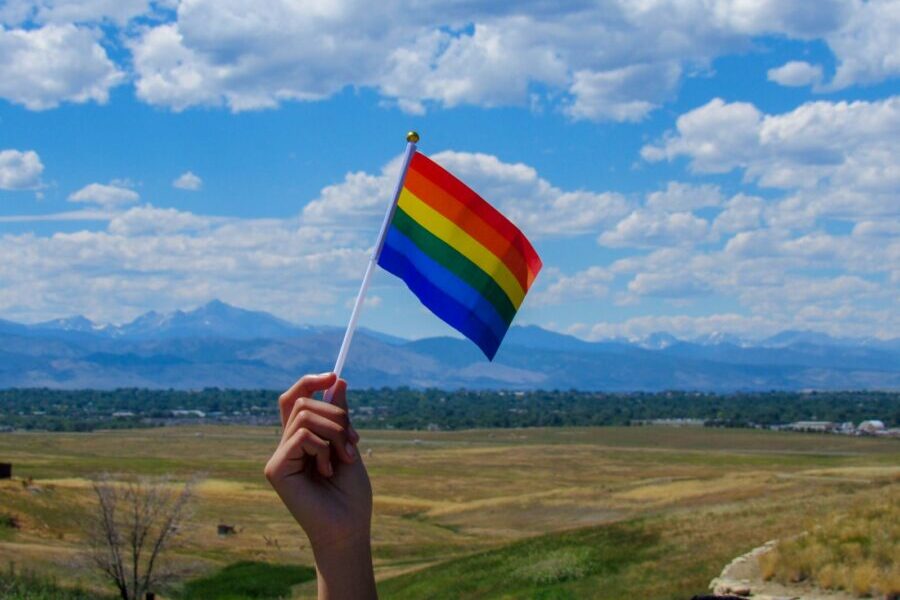Pride month is a celebration and commemoration of the journey that LGBTQ+ people have made, the contribution of those who have gone before, and of people today. At the centre is enabling pride in individual and collective identity.
This needs to be honoured by all, including leaders and their organisations. In a meaningful way, this extends far beyond having LGBTQ+ staff groups and celebrating Pride month.
Pride – honouring identity with dignity
First, look at yourself as a leader- are you open or closed around all areas of intersectionality? Remember, no one is normal–we need to shift our stereotypes and accept each person’s perspective of themselves.
How willing are you to let go of some of your privilege as a leader? asks Emmicki Roos (2022). “Equality can feel like oppression. But it’s not. What you’re feeling is just the discomfort of losing a little bit of your privilege.” Chris Boeskool (2017).
How will you, as a leader, cope with this shift? What can you do to help others adjust?
Respect the journey that people have taken to become who they are. Sometimes people are comfortable with themselves and sometimes not. Identity is a continuous journey with comfortable and uncomfortable steps. Sometimes you need quiet courage.
But some people still feel the need to hide their identity. I worked with a colleague on the global stage for years in what was, I felt, an open and valued-based organisation. I was recently told that they were a member of the LGBTQ+ community and felt the need to keep that part of themselves quiet. This was the decision that they made, and it needs to be honoured. But what was in the culture, and people like me, that led to that colleague living as they did? What did we do or didn’t do?
Today we are used to speaking up. And it is easier to get support.
The first and crucial step is for leaders to examine their personal identity and views towards people who are different. How comfortable are they with LGBTQ+ issues? It’s OK if it is not always easy as we all possess many biases and perspectives that we are unaware of, and which still influence us.
Having done that, then leaders should expect their teams to do the same, beyond an awareness programme.
Look at your work culture and structure. How do they facilitate someone being openly proud of their difference? Leading by example is a good start. Please don’t ask a LGBTQ+ person to share their journey to their identity. This can place them in an awkward spot, as they may feel that they are being treated as research. However, you can ask them for their advice on what you should do, provided there is sufficient trust. If there is not, then the first step is to build trust to get openness.
The aim is to honour identity with dignity. For one and all. Start somewhere and then go everywhere, as a colleague once said.
Taking centre stage
For organisations to be inclusive of LGBTQ+ colleagues and employees during Pride Month and beyond, there must be wholesale change, beyond the occasional initiative and celebration. Often, organisations do not align or synchronise diversity initiatives with other similar programmes. For example, well-being despite there being evidence that one affects the other.
A start would be to identify where there is inclusion and where the blockages are. Find out by involving as wide a group as possible. Place LGBTQ+ in key positions (if they want to). Collectively, look at the findings and plan to build on what is working and address the blocks. Common examples include problems in recruitment, where organisations give people with differences more menial responsibilities than they deserve. They may be more likely to be accused of incompetence or subject to bias.
Regardless of the brilliance of an organisation, there will always be some toxicity. And it is the associated behaviours that are often used to discriminate. Identify and name the negativity and openly address it. Bring in collective accountability–praising the positive and addressing the negative.
Be honest in how far you, as a leader and as an organisation, are prepared to go on the journey to inclusion. Where are you on this ladder which is based on Sherry Arnstein’s work on citizen participation?
- What is all this nonsense?
- Saying that you are open to differences and including people, especially LGBTIQ+. But not doing anything else.
Spending just enough to create flags and posters for Pride Month - Creating a group of LGBTQ+ staff and publicising their existence but not involving them in any way
- Acknowledging that your leadership and organisation need to change and allocate sufficient efforts and resources to this endeavour. Asking LGBTQ+ staff to guide you.
- There is openness, trust, and dignity throughout. People embrace differences. A range of senior and junior LGBTQ+ staff mentors’ leadership. The organisational structures and culture flow in and around individuality with dignity and respect.
Think about how far you are prepared to go? How much further can you go if you give yourself permission with courage? Pride is a quality that should be everyone’s right and LGBTQ+ people certainly deserve the accompanying dignity and honour.
Anna Eliatamby
Anna is a clinical psychologist, executive coach, and organisational well-being expert. She has guided global initiatives for the NHS, International Red Cross and Red Crescent, and PwC, and developed mental health strategies for UN agencies. She is a Fellow of the Royal Society of the Arts and an Associate Fellow of the British Psychological Society. As the Director of Healthy Leadership CIC, Anna promotes personal and organisational growth. She co-authored "Healing-Self Care for Leaders and their Teams" with Grazia Lomonte, a book on professional well-being and self-awareness.



